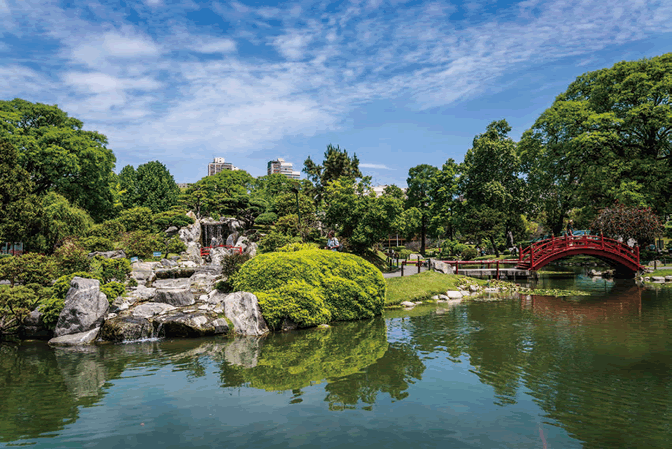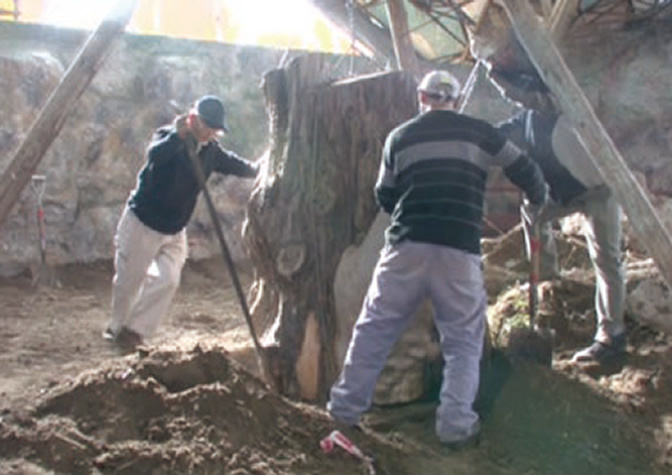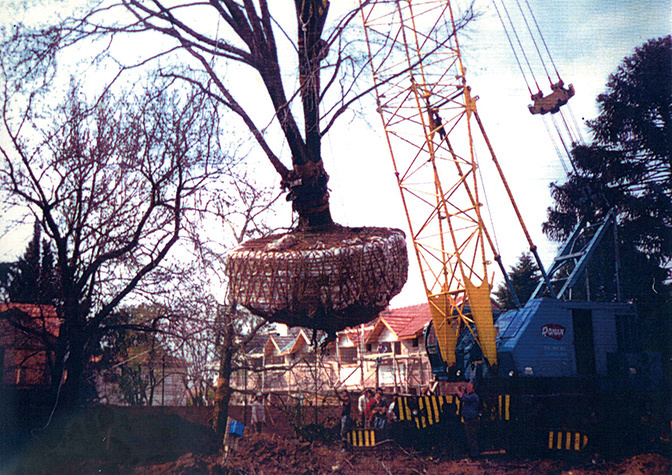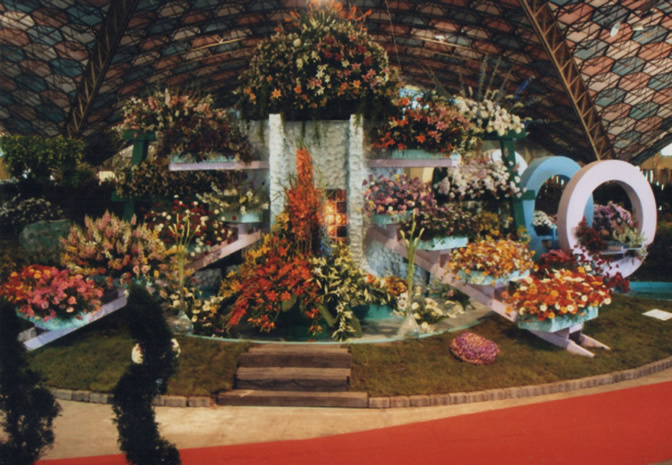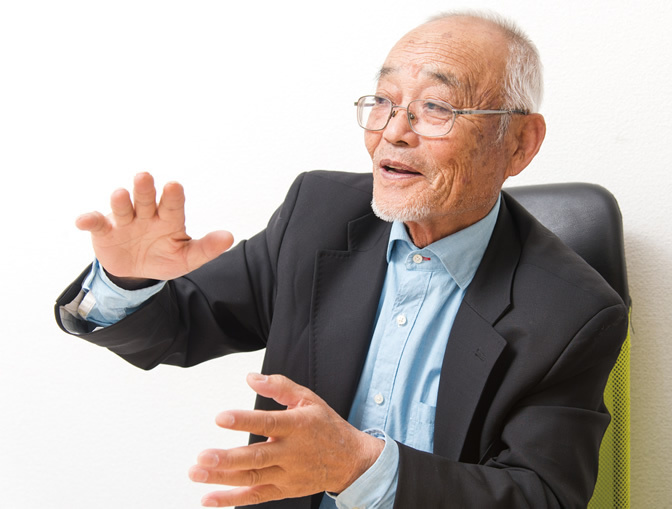The Japanese Garden of Palermo Woods was refurbished in 1979 with design and guidance by Inomata. The garden has become a famous spot visited by many Argentinians and foreigners.
Parque Tres de Febrero, also known as the Bosques de Palermo (Palermo Woods), is a park in Buenos Aires, Argentina, that attracts many visitors from near and far. Situated in one corner of the park is the 2.5 hectare (6.2-acre) Buenos Aires Japanese Garden. The garden features a large pond spanned by a Japanese-style bridge, surrounded by Japanese cherry trees and other flora representative of Japan.
The current Japanese Garden is the creation of the landscape architect Yasuo Inomata, who lives in Escobar, a suburb of Buenos Aires. Inomata studied landscape architecture at a Japanese university and then gained experience as a landscape architect in Japan. After moving to Argentina in 1966, he designed gardens for private residences, and in 1969 he created a Japanese garden for the city of Escobar. In addition, he has been actively involved in Escobar’s flower festival, the Fiesta Nacional de la Flor. This event has been held for more than 50 years, and since the fourth fiesta in 1967 Inomata has been the chief site designer, handling the decorations and other aspects of presentation. Through this work he has contributed significantly to spreading the fame of Escobar’s flower festival throughout Argentina.
Inomata (left) works at preparations for the 2013 flower festival in Escobar. Local workers know him as a strict supervisor but have great confidence in him.
Trees’ roots are bound with straw and rope—a Japanese technique called tarumaki—before they are transplanted as part of the repair and expansion of a Buenos Aires ring road. Argentinians were greatly surprised at the transplanted trees’ survival rate of 95%
Escobar’s flower festival, the Fiesta Nacional de la Flor, has evolved into an artistic exhibition-style event through Inomata’s involvement.
The Japanese Garden of Palermo Woods was originally built and donated to Buenos Aires by the Japanese immigrant community to commemorate the marriage of Crown Prince Akihito and Princess Michiko, the current emperor and empress of Japan, when they visited Argentina in 1967. At the request of the local Japanese Association, Inomata undertook a major refurbishing and expansion of the garden in 1978 and 1979 to make it more authentically Japanese. In the four decades since then, the Japanese Garden has soothed the spirits of visitors and has served as a bridge to Japanese culture.
Inomata became widely known through his involvement in the expansion and repair of a ring road in Buenos Aires Province starting in 1994. This major undertaking required the transplanting of about 1,000 large old trees. Local experts argued that this was not possible because of the age of the trees and that they should simply be cut down. But opponents organized in resistance, and the dispute became a topic on local news programs. The expressway corporation turned to Inomata to solve this issue. He brilliantly succeeded in transferring the trees using tarumaki , a traditional Japanese gardening technique of binding the roots with straw and rope. With this he won renown as the savior who solved a crisis that had threatened to stall the urban development plans of Buenos Aires.
“The Japanese gardens I create express the Buddhist concept of paradise,” says Inomata. “In Japanese gardens, the trees and flowers are laid out not in obviously ordered patterns but as if in nature, thereby conveying a feeling of serenity. While they may seem disordered, the gardens actually maintain a careful order.” When Inomata turned 66 in 2004, the city of Escobar presented him with an honored citizen award. In 2014, the Ministry of Foreign Affairs of Japan conferred a Foreign Minister’s Commendation on him. Landscapes embodying the Japanese spirit created by a Japanese landscape architect in his adopted second home are providing moments of tranquility to Argentinians and visitors from around the world.
Yasuo Inomata
Born in Iwate Prefecture in 1938. Currently lives in Escobar, Argentina. Graduated from the Department of Landscape Architecture, Faculty of Agriculture, Tokyo University of Agriculture, in 1961. Moved to Argentina in 1966, where he began to work as a landscape architect.
Received the honored citizen award of the city of Escobar in 2004. Selected as one of
Argentina’s six representative artists in 2005. Also awarded for his management and craft skills by Tokyo University of Agriculture in 2009.































































































































